Generalities; drying and filtration
ISO 8573.1 norm and compressed air quality
Elements of a compressed air treatment circuit
In order to fulfill end-use air quality requirements, an adapted compressed air treatment is necessary.
Compressed air filters
Filters effectively remove solid particles, liquid water, oil and oil vapor from compress...
Generalities; drying and filtration
ISO 8573.1 norm and compressed air quality
Elements of a compressed air treatment circuit
In order to fulfill end-use air quality requirements, an adapted compressed air treatment is necessary.
Compressed air filters
Filters effectively remove solid particles, liquid water, oil and oil vapor from compressed air. Note that no filter dries compressed air. That is the task of compressed air dryers. Filters merely remove water in a liquid state through their drain system.
Compressed air dryers
They eliminate moisture contained in compressed air in order to avoid any further condensation. The required dryness (dew point) is the key factor when choosing a compressed air dryer.
Aftercoolers
Aftercoolers lower the temperature of the compressed air to avoid oversizing the dryers and guarantee a better filtration efficiency.
Condensate drains and condensate treatment
In accordance with local regulations, oil condensate must be treated before disposal.
Energy saving
Compressed air is a costly energy. Power economisers, leak detectors and programmable isolation valves can significantly lower the energy bill of your company.
Other products
Specific applications, accessories…
Products in this category
-
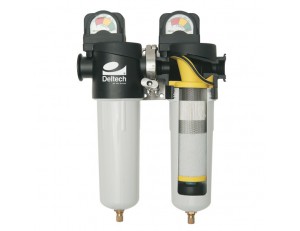
Compressed air filters
More informationsCompressed air contains a number of pollutants which must be removed prior to use.See all products
Filter elements for compressed air
More informationsPARTENAIR offers you a very wide range of filter elements.See all products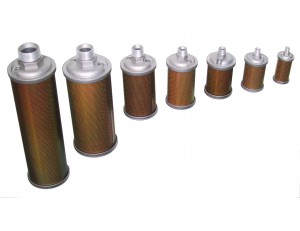
Exhaust silencer for compressed air
More informationsStandard, valve, high pressure, for vacuum ...See all products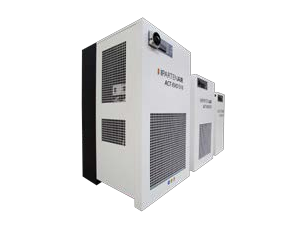
Dryers for compressed air circuits: refrigeration, adsorption, membrane dryers
More informationsBy refrigeration, by adsorption or by membrane, each compressed air dryer technology meets specific needs.See all products
Condensate drains for compressed air
More informationsEffectively remove the condensate present at all drain points in the networks, without loss of compressed air.See all products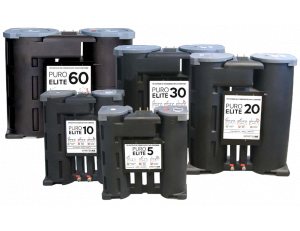
Condensate purifiers for compressed air circuit
More informationsPURO-ELITE separators capture the oil present in the condensates and allow the discharge of purified water containing a maximum of 10 ppm of of hydrocarbons per liter.See all products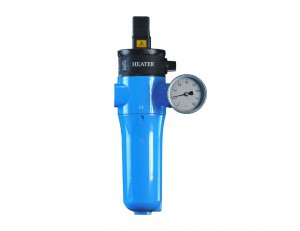
Filter Heater
More informationsCompressed air heaters have unique characteristics to guarantee an adjustable outlet temperature between 20 ° C and 120 ° C.See all products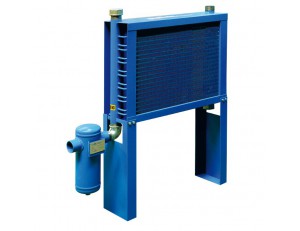
Final compressed air refrigerants
More informationsCooling the compressed air, to a temperature as close as possible to the ambient temperature, makes it possible to condense, before entering the tank and the dryer, a large part of the water vapor contained in the air.See all products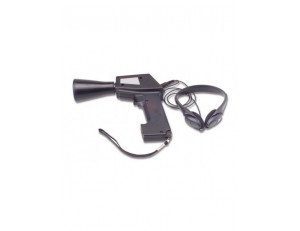
Energy savings for compressed air circuit
More informationsSolutions to reduce cost and optimize a compressed air networkSee all products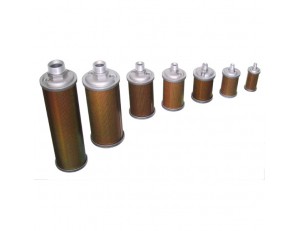
Other compressed air products
More informationsMufflers, desiccants, molecular sieve, auto-clave filters.See all products
The Good Deal
More informationsAre you looking for a good deal? Take advantage of our destocking offers here and contact us to establish a competitive offer.See all productsFoire aux questions
The dew point is the temperature at which the water vapor begins to condense. The dew point corresponds to a relative humidity of 100%. (This is the saturated water vapor content). The air can not contain more moisture in vapor form, water appears in liquid form (dew) A dew point can be negative (frost point) it is white jelly. The saturated vapor content is not linear with temperature but follows an exponential curve. The warmer the air, the higher its saturating content (e.g. 5 g / m3 at 0 ° C, 82 g / m3 at 50 ° C, 588 g / m3 at 100 ° C) The saturating content is independent of the pressure.
In compressed air circuits, only a dryer (by refrigeration or by adsorption depending on the desired performance) is able to eliminate any risk of condensation in the lines. Filters, if fitted with an automatic drain, can only remove water in liquid form where they are installed. At the outlet of the filter, the compressed air remains 100% saturated with humidity. The filters therefore do not avoid the subsequent condensation caused by the cooling of the compressed air when traveling in pipes.
The cooling of the compressed air, to a temperature as close as possible to the ambient temperature, makes it possible to condense, before entering the tank and the dryer, a large part of the water vapor contained in the compressed air. This condensation is separated by the separator which follows the refrigerant and in which sudden changes in direction and speed of circulation of the air flow project the droplets on the wall. They thus flow to the lower part of the separator or they are eliminated from the network by the purge system. A low temperature avoids oversizing the air dryers.
These traps incorporate a condensate storage tank fitted with sensor (s) capable of detecting a maximum level and a minimum level in this tank. An electronic module initiates the purge when the high level is reached and stops this purge when it reaches the low level. This leaves a small volume of liquid in the tank which prevents any loss of compressed air. These traps require special care during installation. In fact, the flow of condensate to the trap takes place only by gravity. Improper installation prevents condensate from entering the trap, so the trap cannot operate.
The normal cubic meter (Abbreviation Nm3) is a reference unit. It is one cubic meter of free air, at sea level at normal atmospheric pressure (1013 mBar). It differs from the ISO1217 cubic meter of air which is defined at 20 ° C. A normal cubic meter is equivalent to ± 1.07 m3 at 20 ° C.
Coalescence is the union and fusion of small droplets to form larger droplets. In compressed air, this phenomenon is implemented by the filter media of the coalescing oil separator filters. In these filters, the droplets are grouped together in an increasingly large size so that their weight ends up being sufficient to entrain them, by gravity, out of the filtering medium to be then eliminated by the purging system.
Yes. The discharge of condensate to the sewer cannot be done without prior treatment. The discharge of hydrocarbons (including compressor oils present in compressed air condensates from lubricated compressors) is regulated by the environmental code (Art. R211-60) and the decree of February 2, 1998 (Art 32) The installation of a condensate trap - or oil / water separator - is therefore essential for compliance with the legislation.
Yes. Breathing air is normalized. For air intended for breathing protective devices, standard NF EN 12021 applies. It imposes limit values for water vapor, residual oil, Co, Co2, etc. For the air quality and the specific constraints for asbestos removal operations, the decree of April 8, 2013 applies. For medicinal air, the reference text is the European Pharmacopoeia. Our breathing air production units deliver a quality of compressed air that meets all of the above standards.
Yes. The decree of 03/15/2000 and decree 99-1046 of December 13, 1999 defines the conditions for the operation of pressure tanks. As a general rule, compressed air tanks are subject to periodic inspection every 40 months maximum (Title III, Art. 10, §2) and to periodic requalification every 10 years (Title V, Art. 22, § 1). In addition if these tanks have an operating pressure> 4 bar and a product volume (liters) x operating pressure (Bar)> 10000 they are subject to declaration of commissioning (decree of 13/12/1999 - Art. 18 )




